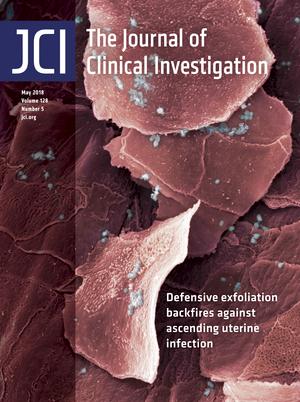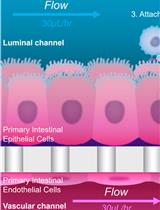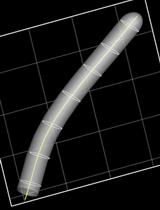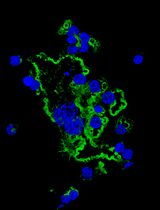- EN - English
- CN - 中文
Activation of Fibroblast Contractility via Cell-Cell Interactions and Soluble Signals
通过细胞间相互作用和可溶信号激活成纤维细胞收缩
发布: 2018年09月20日第8卷第18期 DOI: 10.21769/BioProtoc.3021 浏览次数: 9183
评审: Jia LiSalah BoudjadiYoshihiro Adachi
Abstract
The collagen contraction assay is an in vitro, three-dimensional method to determine the factor(s) affecting the contractile behavior of activated cells such as fibroblasts in either physiological or pathological scenarios. The collagen lattices/hydrogels are seeded with fibroblasts to mimic the interactions between these cells and their surrounding extracellular matrix proteins in the connective tissue. This method is an important platform to assess components as potential therapeutic targets to prevent pathologies such as fibrosis, which are manifestations of hyperactivated fibroblasts. We have described a basic version of this collagen contraction assay, which is amenable to customization using different cell types under diverse experimental conditions.
Keywords: Collagen contraction (胶原收缩)Background
Tissue contraction and remodeling of the extracellular matrix are essential processes in numerous physiological conditions such as wound healing. Central to these two phenomena are fibroblasts, which not only produce and secrete the extracellular matrix proteins but can also reorganize them through mechanical interactions. Interestingly, these cellular behaviors are often exaggerated in pathological conditions such as fibrosis (Desmoulière et al., 2005), thereby illustrating the need to understand the molecular regulation of these processes. Though it has long been known that collagen, one of the main components of the extracellular matrix, is a major player in tissue contraction (Bell et al., 1979), a thorough understanding of the mechanistic details of this process remain elusive. The study of the contraction of fibroblast populated collagen matrices in vitro has enabled researchers to identify novel players which bring about tissue contraction (Ngo et al., 2006; Su and Chen, 2015). Based on this assay, soluble factors such as TGFβ (Levi-Schaffer et al., 1999) and those from immune cells (Garbuzenko et al., 2002; Zagai et al., 2004) have been identified as major factors affecting fibroblast activity. To a large extent, relative to soluble extracellular signals, the contribution of cell-cell interactions on the contractile ability of fibroblasts has been understudied. Recently, we have shown that an important player regulating fibroblast-mediated contraction is the heterotypic cell-cell interactions with immune cells such as mast cells (Pincha et al., 2018). In this protocol, we provide a method to use this assay to determine the effect of cell-cell interactions on matrix contraction. In doing so, we have elaborated upon previously published protocols (Ngo et al., 2006; Su and Chen, 2015) and provide simple alternatives to setting up the assay and the subsequent analysis of the gels. This protocol can also be modified to recapitulate the native/in vivo environments of diverse cell types to assay their regulation within their “normal” microenvironment.
Materials and Reagents
Note: The materials below can also be substituted for equivalent reagents from other companies. Cell culture media and additives will vary based on the cells to be used for the assay. For our protocol, we have used primary dermal fibroblasts from neonatal mice and the mast cell line MCP-5.
- Cell culture and counting
- 70% ethanol
- Recombinant mouse IL-3 (Thermo Fisher Scientific, GibcoTM, catalog number: PMC0034 )
Note: Lyophilized mIL-3 should be stored at 4 °C. Aliquot and store reconstituted mIL-3 at ≤ -20 °C, use within 12 months of reconstitution. - Dulbecco’s Modified Eagle’s Medium (DMEM) (HiMedia Laboratories, catalog number: AL066A )
Note: Store at 4 °C for up to 12 months. - Fetal Bovine Serum (Thermo Fisher Scientific, GibcoTM, catalog number: 26140095 )
Note: Store at -20 °C for up to 12 months. - Sodium Pyruvate (Thermo Fisher Scientific, GibcoTM, catalog number: 11360070 )
- Non-Essential Amino Acids (Thermo Fisher Scientific, GibcoTM, catalog number: 11140050 )
- RPMI media (Sigma-Aldrich, catalog number: R0883 )
Note: Store at 4 °C. Media is light sensitive, use within 12 months of manufacturing. - Solution of penicillin-streptomycin (10,000 U/ml penicillin G sodium and 10,000 μg/ml streptomycin sulfate, Thermo Fisher Scientific, GibcoTM, catalog number: 15140122 )
Note: Use within 12 months of manufacturing. - Solution of trypsin, 2.5% 10x stock (HiMedia Laboratories, catalog number: TCL051 )
Note: Use within 12 months of manufacturing. - Trypan Blue stain (Thermo Fisher Scientific, GibcoTM, catalog number: 15250061 )
Note: Use within 3 years of manufacturing. - 1x PBS (see Recipes) (Cold Spring Harbor, doi:10.1101/pdb.rec556)
- Collagen lattice
- 10 μl, 200 μl and 1,000 μl pipette tips (any desired make)
- 0.22-μm syringe-driven filter units (Merck, catalog number: SLGV033RS )
- 10 ml Syringes (Dispo Van)
- 24-well cell culture plates (Eppendorf, catalog number: 0030722116 )
- 15 ml Graduated Centrifuge Tubes, sterilized (Tarsons, catalog number: 546021 )
- 1.5 ml microfuge tubes (Corning, Axygen®, catalog number: MCT-150-C )
Note: Need to be autoclaved/sterilized before use. - Rat tail collagen type 1 (Merck, catalog number: 08-115 )
Note: Store at 4 °C, use within 12 months of manufacturing. - Glacial Acetic acid 99.8% (Sigma-Aldrich, catalog number: 109088 )
Note: Store at 15-30 °C. - NaOH pellets (Sigma-Aldrich, catalog number: S8045 )
Note: Store at 15-30 °C. - Stock collagen solution (3 mg/ml) (see Recipes)
- 1 M NaOH Solution (see Recipes)
- Acetic acid solution (0.1%) (see Recipes)
- Image acquisition/analysis
Equipment
- 10 μl, 200 μl and 1 ml pipettes (any desired make)
- Centrifuge (Eppendorf, model: 5810 R or equivalent)
- Hemocytometer (Sigma-Aldrich, catalog number: Z359629 )
- Incubator (CO2 incubator, Thermo Fisher Scientific, model: FormaTM Steri-CycleTM , or equivalent)
- Microscope (OLYMPUS, model: SZX16 or equivalent)
- Digital Camera 3.2 megapixel (Nikon, model: COOLPIX A10 or equivalent) and stand with camera holder
- Flatbed scanner (Epson, model: V39 or equivalent)
Software
- ImageJ Software v. 1.8.0 (National Institutes of Health, Bethesda, MD, https://imagej.nih.gov/ij/download.html) (Schindelin et al., 2012; Rueden et al., 2017)
Procedure
文章信息
版权信息
© 2018 The Authors; exclusive licensee Bio-protocol LLC.
如何引用
Pincha, N., Saha, D., Bhatt, T., Zirmire, R. K. and Jamora, C. (2018). Activation of Fibroblast Contractility via Cell-Cell Interactions and Soluble Signals. Bio-protocol 8(18): e3021. DOI: 10.21769/BioProtoc.3021.
分类
发育生物学 > 形态建成 > 能动性
细胞生物学 > 基于细胞的分析方法 > 胞外微环境
您对这篇实验方法有问题吗?
在此处发布您的问题,我们将邀请本文作者来回答。同时,我们会将您的问题发布到Bio-protocol Exchange,以便寻求社区成员的帮助。
提问指南
+ 问题描述
写下详细的问题描述,包括所有有助于他人回答您问题的信息(例如实验过程、条件和相关图像等)。
Share
Bluesky
X
Copy link
















